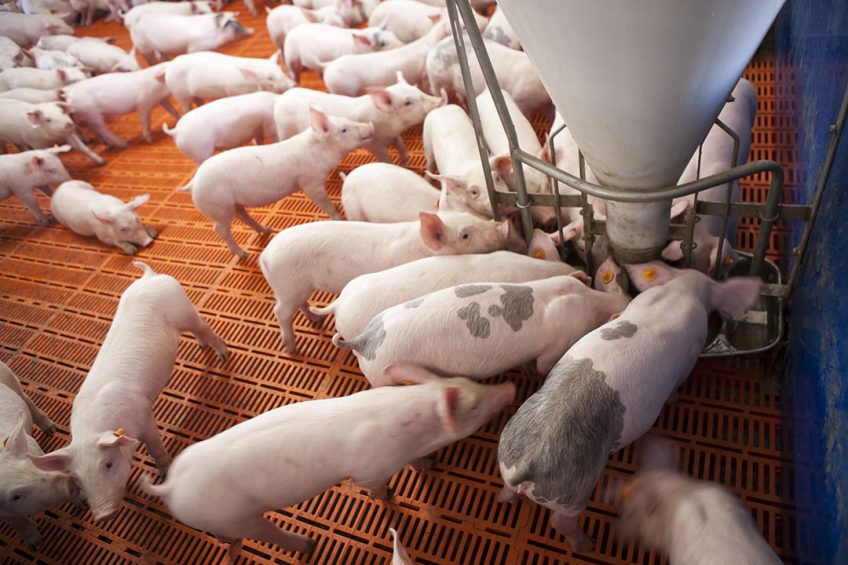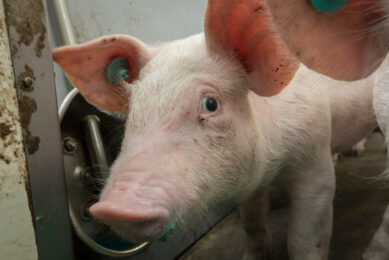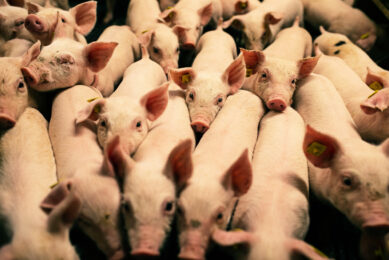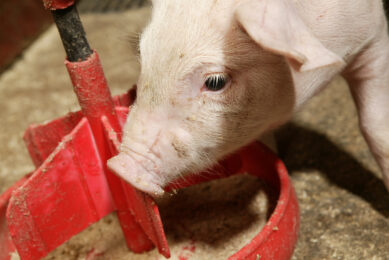Holistic approach to post-weaning challenges

Therapeutic use of zinc oxide (ZnO) will decrease in the coming years and come to an end in 2022. It is well known that this can lead to increased pig health challenges with an impact on growth. This requires a strong holistic approach from the beginning.
Weaning is a crucial phase in pig production. At this time, the piglet’s immune system is inexperienced and immature, and continuously challenged by pathogenic bacteria. Around weaning, young piglets in standard farm conditions often suffer gastrointestinal changes because of the sudden transition from mother’s milk to solid food. This may cause a reduction in the length of intestinal villi height and the crypt depth, which reduces digestive and absorptive capacities. In this fragile state of equilibrium, the development of diseases can have a significant impact on farm productivity. The shift from sows milk to dry feed induces a period of fasting during the first hours following weaning. This weaning anorexia has a negative impact on growth and leads to mobilisation of fat reserves.
One approach to improve the gut health of piglets is dietary manipulation:
- Consider the nutrient needs of the gut due to impacts on overall nutrient utilisation
- Recognise the microflora contribution to nutrient utilisation as they are first consumers of nutrients
- Finally, combined with the right nutrition, the use of functional additives and raw materials can contribute to accelerating animal responses for healthy growth.
Challenging time for growability
The litter size increases yearly with around +0.5 piglet in the high productive European region, generally leading to lower piglet quality at weaning in terms of body weight and growth potential but also gut development. The weaning period is recognised as a period when acute changes in environment and feed type make nutritional control hard to achieve. Over the years, antibiotics have been widely used to help support piglets that, for several reasons, are unable to cope with the transition. On the other hand, medication-free programmes offer the opportunity to increase feed security around weaning. Still, this hardly guarantees good growth particularly when we take small and/or immature piglets into consideration.
Supporting healthy piglet growth
Cargill European swine team has spent several years researching the ingredients and formulations that allow these modes of action to be incorporated in one concept, Neopigg Shield. Understanding these mechanisms is critical when aiming to maintain piglet growth while reducing the reliance on antibiotics and therapeutic ZnO. It is of such importance, that Cargill continuously improves this concept to ensure that the solution is sustainable, now and in the future.
Striving to maintain optimal and healthy piglet growth while reducing the reliance on antibiotics and therapeutic ZnO requires a holistic approach. Four modes of action are critical in reducing the need for antibiotics and therapeutic zinc in weaned piglets:
- Protein digestion
- Mucin effect
- Immunity regulation
- Intestinal flora
Each mode of action has a role to play and requires specific nutritional ingredients to maximise its ability to function properly in the piglet digestive system. Among the different additives targeting gut microflora and the gut barrier, Cargill, develops also nutrition solutions which promotes the use of “postbiotics”, peptides from yeast fermentation, which play a role in immunity regulation.
Reducing post-weaning diarrhoea
Additives alone are not enough: in fact, this concept is supported by Cargill’s Nutrition System (CNS) which offers specific nutrients that enhance the digestibility and safety of the diet. CNS provides tools to precisely assess and control the quality of the protein sources and amino acid (AA) digestibility used in piglet feed. Moreover, diet formulation with CNS helps to control intestinal protein fermentation with a specific nutrient, Swine Gut Fermentable Protein. Cargill’s research shows that the lower the intake of this nutrient is, the lower the occurrence of diarrhoea in weaner pigs (Figure 1).
Figure 1 – Effect of fermentable protein intake on the incidence of diarrhoea on post-weaning piglets (visual scoring).
Strengthening the gut
In order to successfully decrease fermentable protein without lowering too much the crude protein content in piglet feed, the programme is, among other recommendations, based on the use of a high amount of Provisoy. This highly digestible soy protein concentrate allows excellent protein digestibility and the right essential AA provision for piglets around and after weaning. Neopigg Shield AA recommendations are designed to support mucin synthesis in the gut to strengthen the gut barrier system being part of the fourth pillar of shield concept.
Protein digestibility is definitively important, as well is the role of fibre if selected for the rheologic capacity when in contact with water (gelling structure). This may ensure a protective layer in the intestine and prevents gut damage at weaning. Associated with other selected sources, fibres also contribute to the homogeneity of the stomach bowl and regulate stomach emptying in order to regulate piglet feed intake. Adapted through dedicated programmes, Neopigg Shield specifications are adjusted for each farm situation depending on feed intake capacity, weaning age related to gut development and allowance for animal protein (blood plasma).
Maintaining growth performance
With more than 50 trials conducted on more than 50,000 piglets, the concept is based on strong field trials across Europe. With the therapeutic ZnO ban, from weaning until delivery, the concept can result in:
- Up to 86% reduction in group medication of antibiotics, while ensuring a stable manure score and healthy growth
- Up to 14% improvement on average daily gain (versus existing various medication-free programmes)
- <1.5 fcr between weaning and 70 days of age>
As an example, implemented in the entire post-weaning period, this concept increased the growability* index up to 15%, regardless of the initial level of performance on the farm (Figure 2).
Figure 2 – Neopigg Shield programme field trials results compared to control medication/ZnO free programme (2018).
Neopigg Shield contributes to the maintenance of growth performance while creating the ideal environment in the pig’s gut.
*Growability is an indicator that combines post-weaning survival and growth figures.
Authors: Lucie Ouine, Kaat Goris, Maud Le Gall and Graziano Mantovani, Cargill
References available upon request









